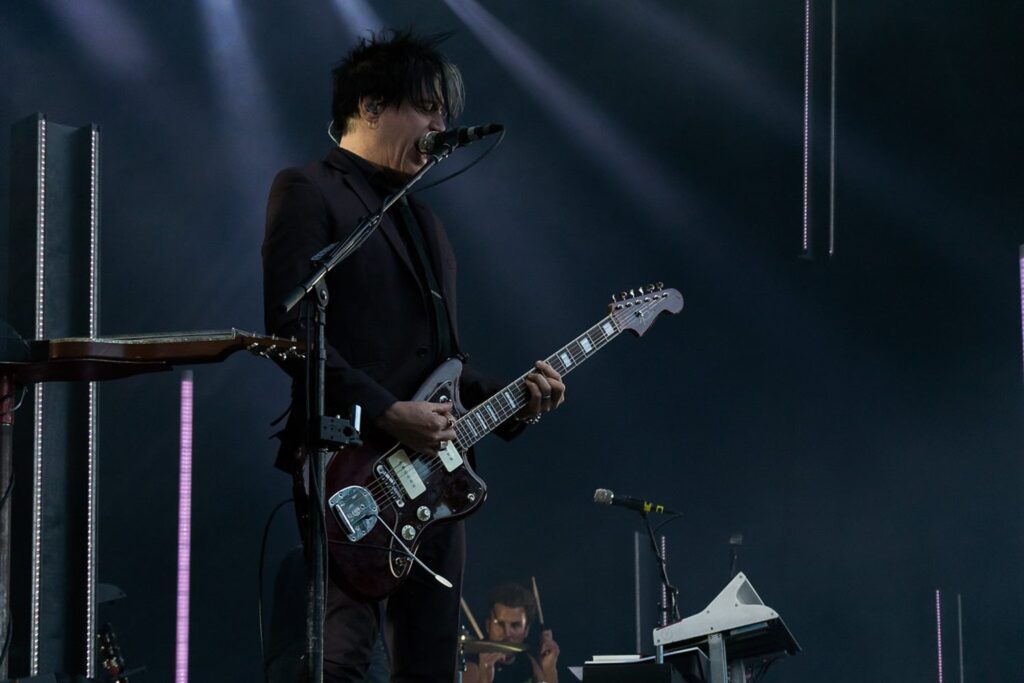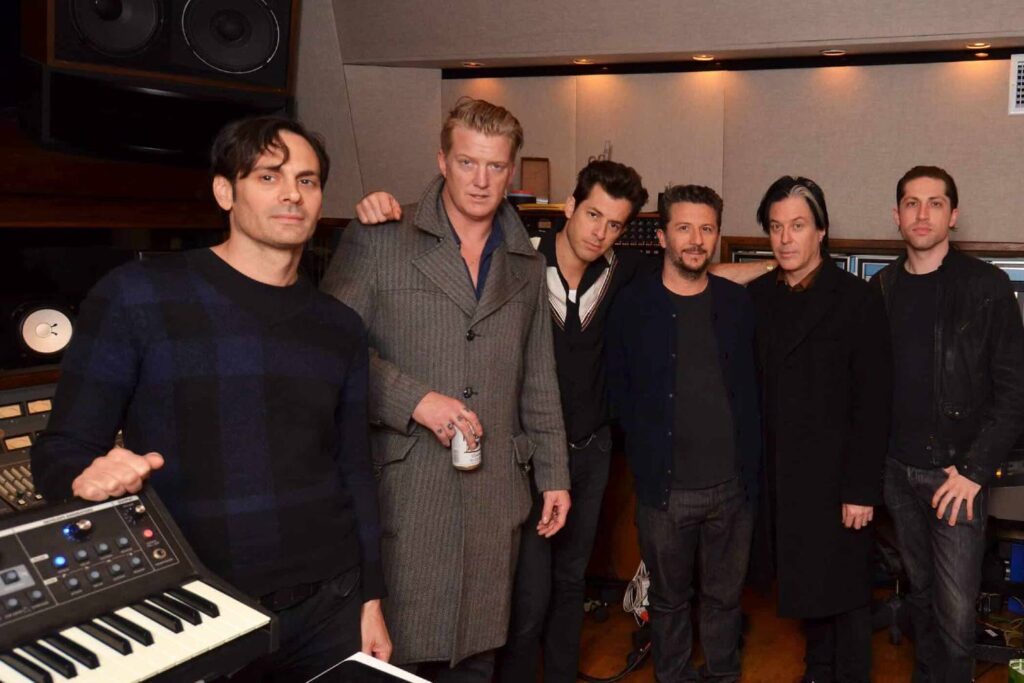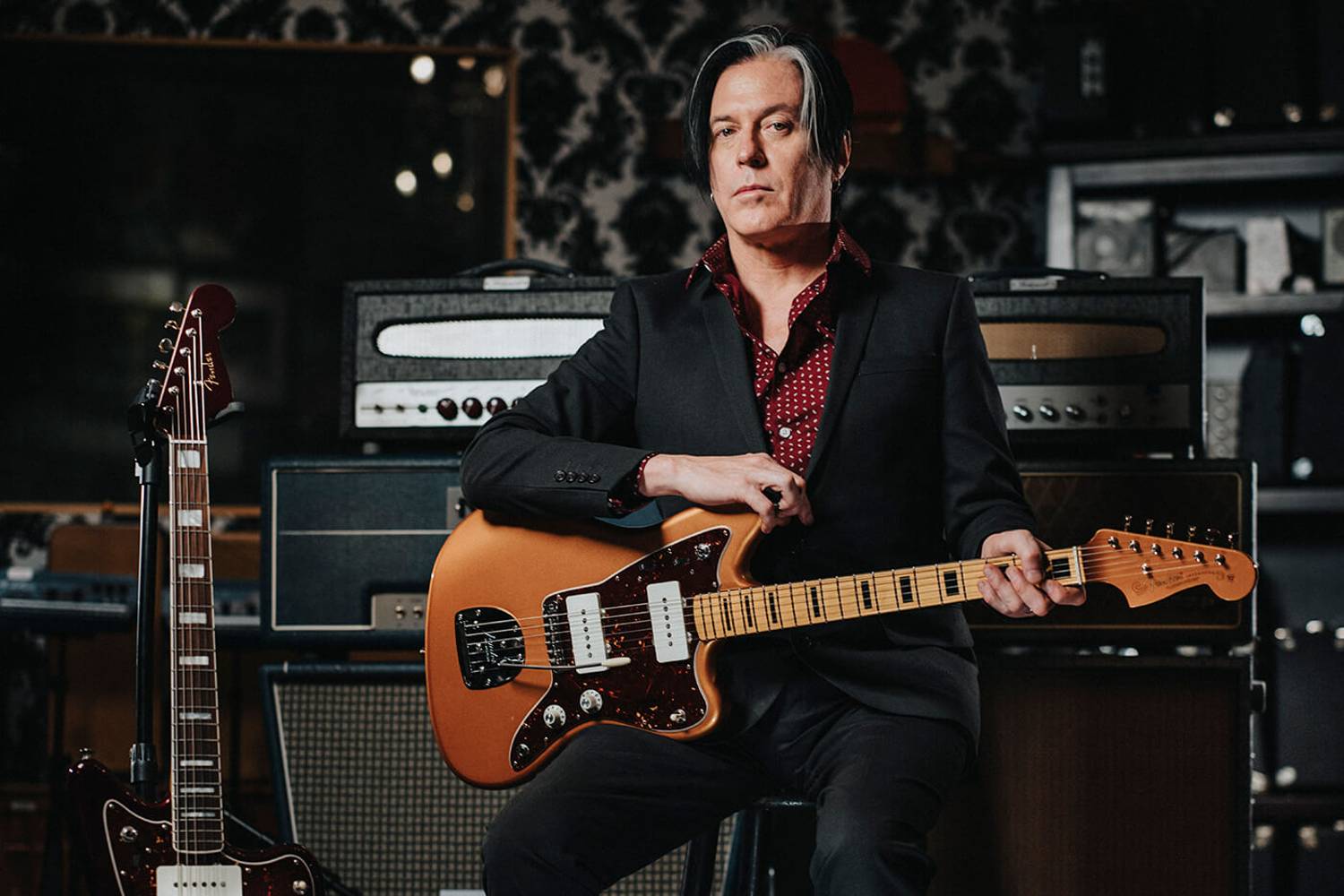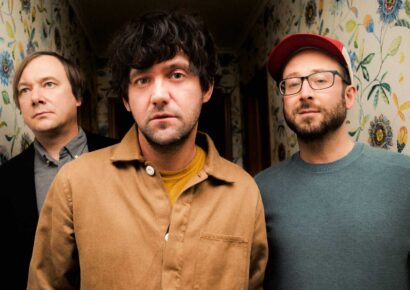A teaser on Queens of the Stone Age's socials last week hinted at the prospect of an Australian tour, now confirmed for February 2024 with appearances all over the company.
Troy Van Leeuwen and Queens of the Stone Age have a reputation that precedes them. Incorporating multiple genres, styles and influences into one cohesive sound, using an array of different vintage and analogue gear to do it, I myself having a Fender Troy Van Leeuwen Jazzmaster sitting on a guitar rack beside me as I write this.
Their recordings are stuff of legend, with pawn-store bought amps famously making up a lot of the guitar tones on their stellar release, Songs for the Deaf, the first record that Troy Van Leeuwen appeared on, while the band has also been more infamously known for keeping the exact signal chains a secret. So how does this all translate from the studio to the stage? We had the chance to speak to Troy to find out.

Read up on all the latest features and columns here.
Queens of the Stone Age Australia
He’s sat in his car somewhere in LA and is polite, open and relaxed as we begin to chat. He’s excited to be back in Australia. “It’s been too long, about five yeas [since QOTSA played Australia].”
I begin the chat by explaining the readers of Mixdown are reasonably well educated in gear-related content (that’s you guys!), and he chuckles at my use of the word “minutiae” related to being a musician. “Okay good, ‘cause I could talk about that to boring lengths”.
I have to ask: how does the gear he’s using live compare to what’s on the new record In Times New Roman…?
“Well, the live rig is pretty much every pedal that I used on the record, so it’s pretty extensive. In the studio, we’re just working at the speed of inspiration. I remember at one point, we were all playing together, it just seemed like the whole floor was just riddles with pedals.” he laughs at this memory.
Troy Van Leeuwen gear
“We have a lot of gear. The carpet – it felt like a pedal floor. Guitar-wise I used the same stuff that I use live, and amp-wise, I tried some new stuff that I really liked.” he corrects himself here “New to me, but old technology.”
He continues. “I’ve a couple of friends that I’m making amps with, so that’s been pretty fun too.”
Despite the array of gear available, Van Leeuwen kept reasonably simple on the record. “I kept it to just one amp signal. On the last couple records I was doing some wet/dry amp… and I do that live, but y’know there’s three of us guitar players and finding a frequency spot can be challenging. We try to keep it pretty direct.”
We pivot a bit to the live set here, and I ask how they’re reproducing the layers of an entire album in their five-piece.
“No tracks. No extra musicians. Just us.”
“Y’know, we’ll use effects and sample hits, John [dfgh] will hit an intro, but nothing. There’s no click, there’s no track… none of that headache. We’re able to do everything pretty much between Dean [] Josh [Homme] and myself. Dean is heavy on the keyboard stuff, I join in a couple times for keyboards and lap steel, he jumps in on the guitar for a few things too. So we cover all the ground.”
Queens of the Stone Age are able to prioritise the layers and production to make sure the songs translate without the extra headache of additional tracks or musicians. “Y’know, maybe there’s a shaker that’s not being played, or maybe there’s a little rhythm track that’s kinda buried that isn’t necessarily as important as a melodic line on the guitar, so yeah it’s just better for us because things tend to get chaotic on stage and a computer on stage scares me.”
What they have done, however, is sampled the vintage synths used on the record instead of touring with antiques. “We’re using sampled-based software, but having a click and all that stuff, would be a nightmare for us. Definitely things would go down. Tequila would get spilled.” he laughs.
Queens of the Stone Age have a free-flowing energy on stage, speaking to their ability as musicians to jam, but also pen a hit single. How do the songs begin?
I would say the majority of the basic track, the rhythm track, we have it mostly in our heads.” he begins. “[it’s a] pretty developed arrangement. So those things [are finished] before we step into a room, and we were able to track to tape which is nice. I don’t care what anyone says about the tape hiss on our new record, and I love it.”
“The real band is captured in that way. So we’re trying to come in with as much of the ideas as we can, and then lay it down that way. And then everything else gets flourished around, vocals and lyrics, and that’s the stuff that takes time.”
“Josh will kick things off in an arrangement and we kind of just play off of that. We’ll play the song, y’know, just play through it quite a few times to figure out, so everyone can hear everybody, and then it’ll start coming together within an hour or so.”
I exclaim at the speed at which they’re working.
He laughs “Well, it’s not always that fast. I’m saying, that’s what we like to do. Sometimes they’ll take half a day, and we’ll sleep on it and come back in and go ‘oh this one actually works better’.”
“That’s the cool thing about our band, everyone’s head is in deep, when we’re in that spot.”
It’s refreshing to hear a band writing as a band, jamming and figuring out parts organically. I ask if they have the record in mind while arranging their own parts.
“Sometimes a tone will dictate certain things, like if there’s a sound, especially guitar-wise.” he starts. “There was some interesting sounds that we were playing around with, and that dictated how things went. Of course we’re all sort of engineers-slash-producers, and we’re pretty hands on with our recordings.”
“With the exception of Villains, the last record, we were more like [to Mark Ronson and Mark Rankin] let us be a band, you guys do all the technical stuff.”
“Some days we’ll just start making a record, and we’re just like ‘Oh well, here we go’. Instead of making a bunch of demos, demos turn into tracks.”
I ask what challenges a band with five people who understand engineering and producing, usually working with a producer as well presents.

“That’s the whole thing. It’s like, no matter what, we end up putting our hands on the [mixing] board at some point. Even when Ronson is at the helm, we’re making mic suggestions and mic pre suggestions, y’know? We had the luxury when we worked with him to be in United Studios which has been around since the late 50s. And they have RCA ribbon mics that Elvis sang into. Vintage gear, they need a whole tech department to keep it up and that was really cool to have that experience.”
“But yeah at the end of the day, the new record, it’s just us being us, using what we have. Our amps, our mics, our mic pres and stuff, so it does sound like our band live.”
Queens of the Stone Age Australia/QOTSA Australia
Queens of the Stone Age’s new record In Times New Roman… is out now and the band arrive in Australia in February 2024. For more into head to Live Nation.

